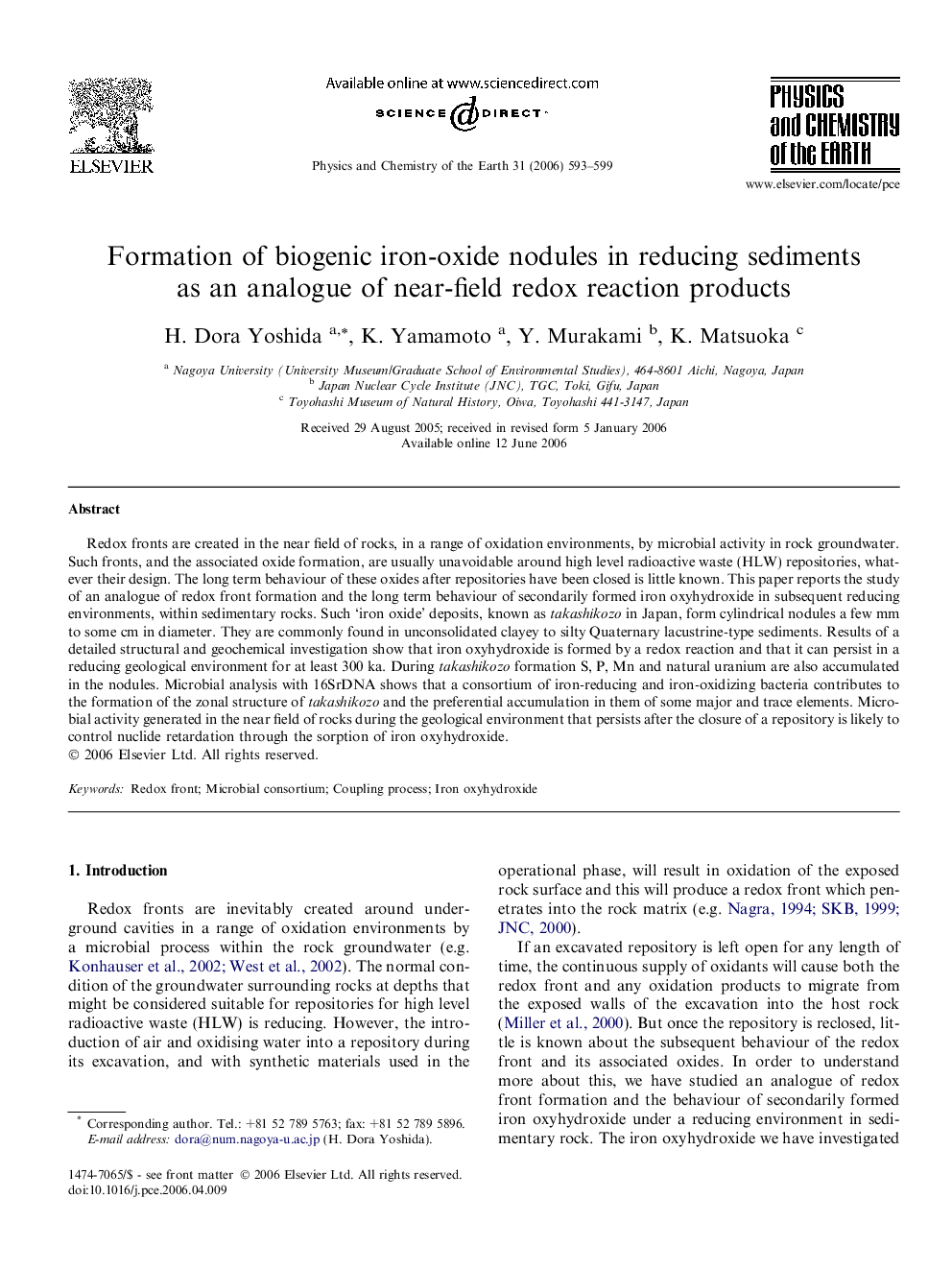| Article ID | Journal | Published Year | Pages | File Type |
|---|---|---|---|---|
| 4722090 | Physics and Chemistry of the Earth, Parts A/B/C | 2006 | 7 Pages |
Redox fronts are created in the near field of rocks, in a range of oxidation environments, by microbial activity in rock groundwater. Such fronts, and the associated oxide formation, are usually unavoidable around high level radioactive waste (HLW) repositories, whatever their design. The long term behaviour of these oxides after repositories have been closed is little known. This paper reports the study of an analogue of redox front formation and the long term behaviour of secondarily formed iron oxyhydroxide in subsequent reducing environments, within sedimentary rocks. Such ‘iron oxide’ deposits, known as takashikozo in Japan, form cylindrical nodules a few mm to some cm in diameter. They are commonly found in unconsolidated clayey to silty Quaternary lacustrine-type sediments. Results of a detailed structural and geochemical investigation show that iron oxyhydroxide is formed by a redox reaction and that it can persist in a reducing geological environment for at least 300 ka. During takashikozo formation S, P, Mn and natural uranium are also accumulated in the nodules. Microbial analysis with 16SrDNA shows that a consortium of iron-reducing and iron-oxidizing bacteria contributes to the formation of the zonal structure of takashikozo and the preferential accumulation in them of some major and trace elements. Microbial activity generated in the near field of rocks during the geological environment that persists after the closure of a repository is likely to control nuclide retardation through the sorption of iron oxyhydroxide.
